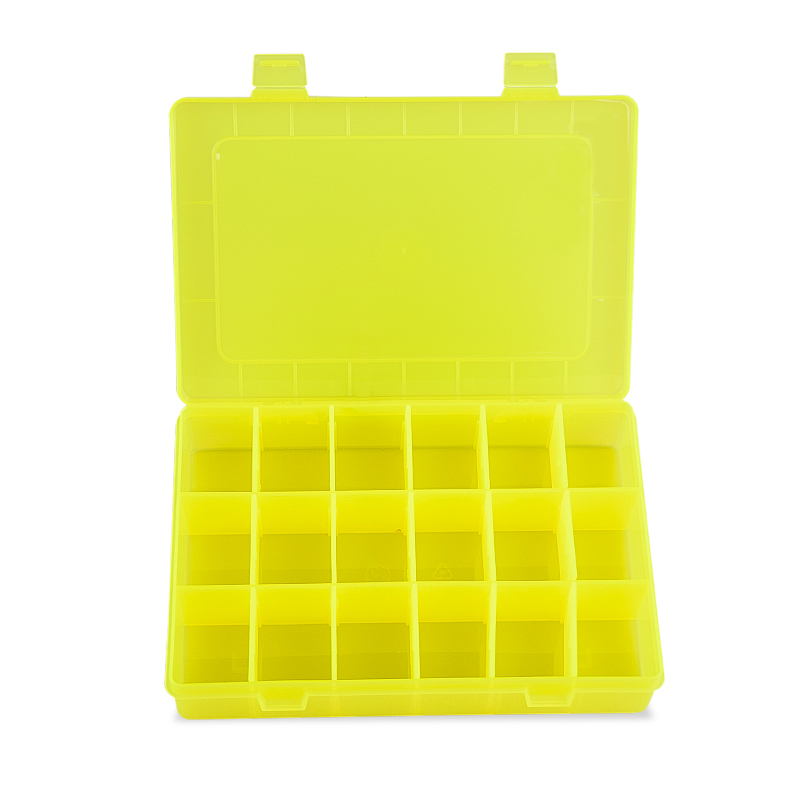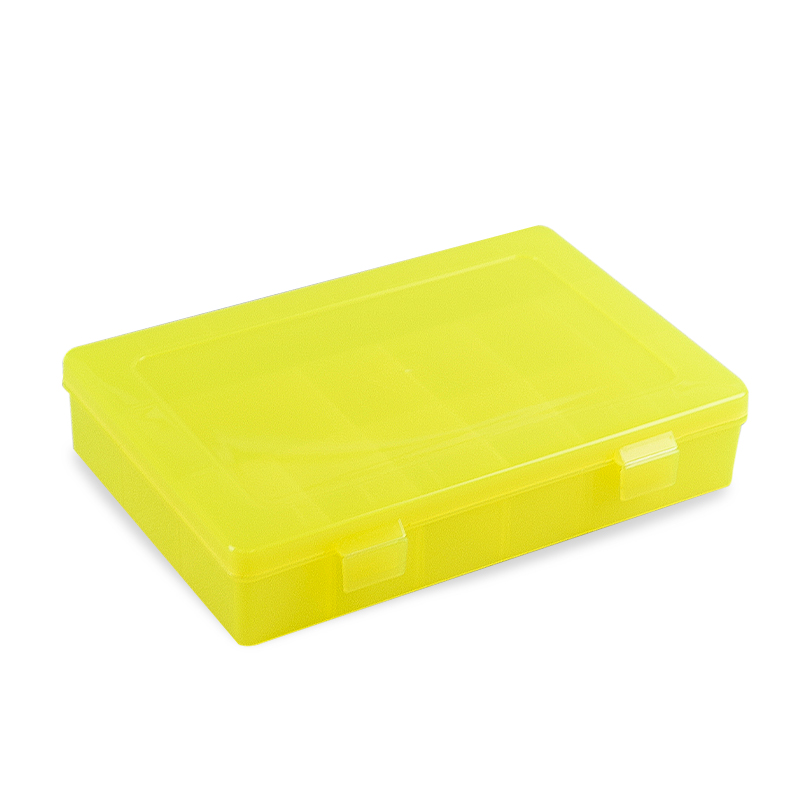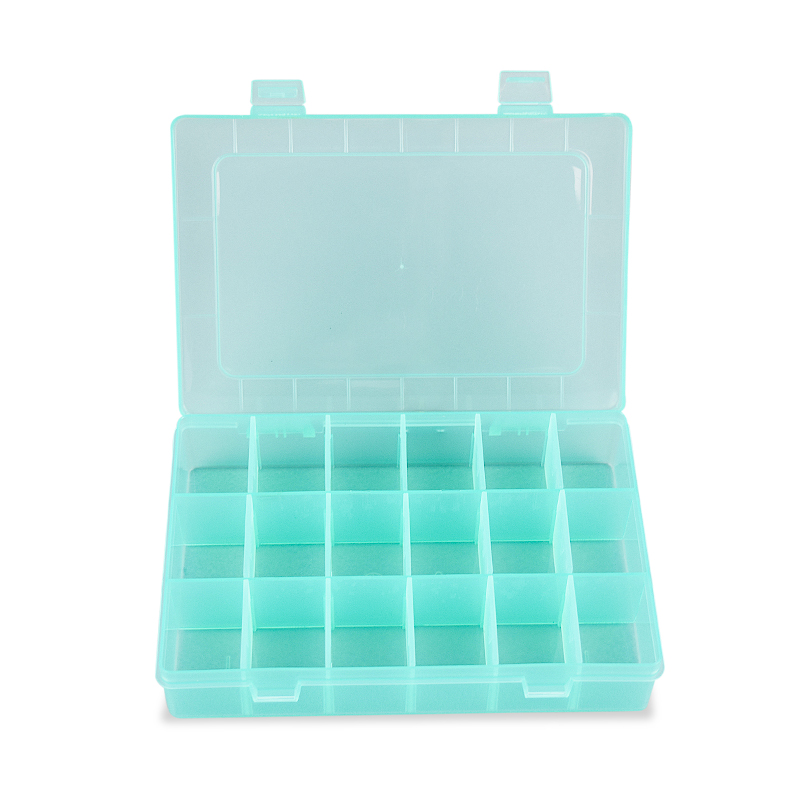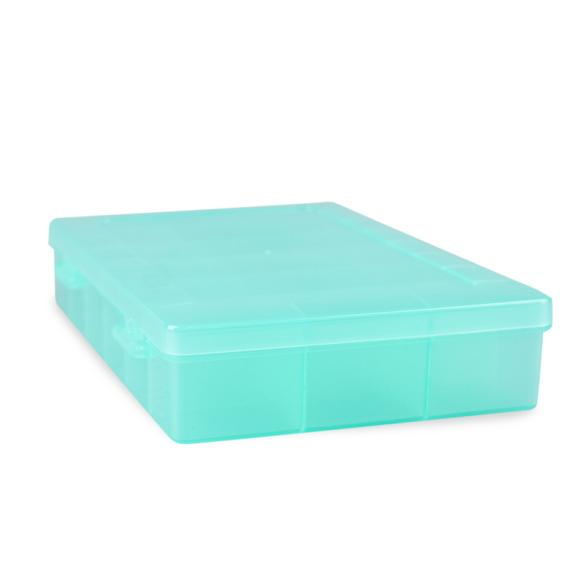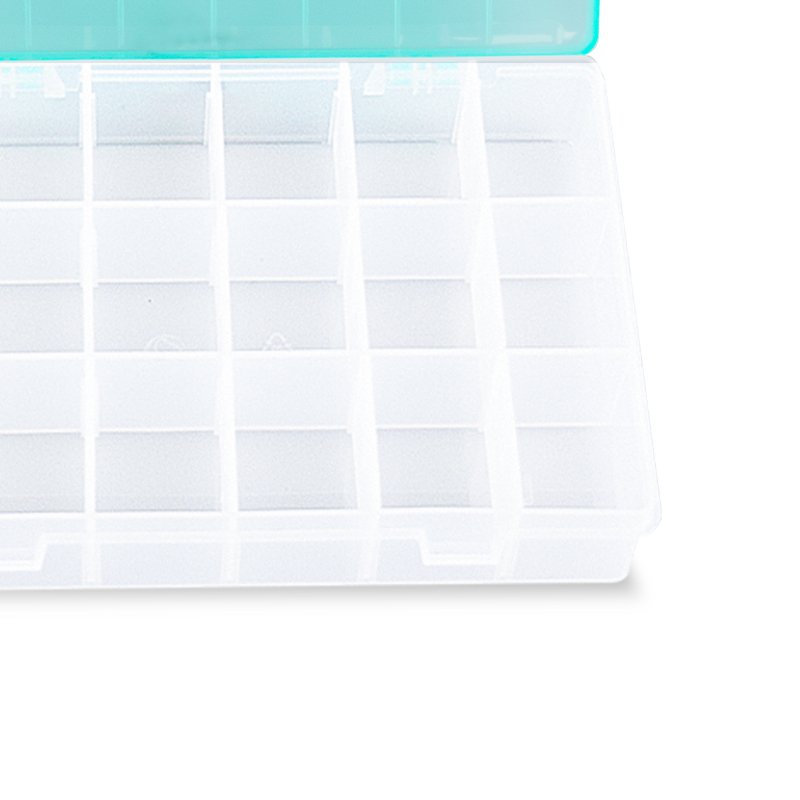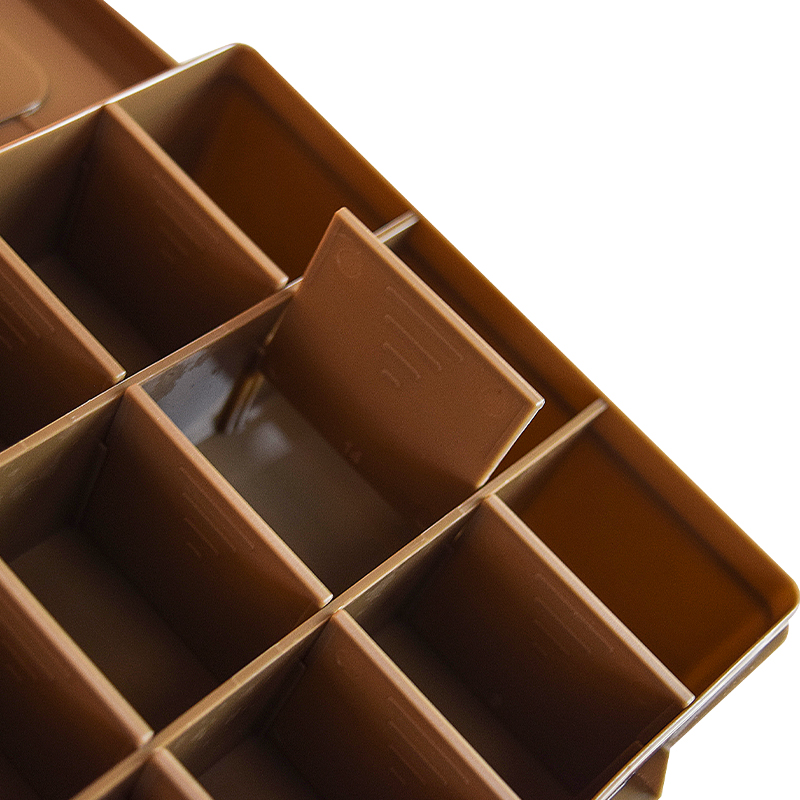Fishing Tackle Box
The main function of the fishing tackle box
The main function of a fishing tackle box is to store and organize fishing equipment. It typically contains items such as lures, hooks, line, sinkers, and other tackle. It also provides a convenient way to transport and access the necessary items for a successful fishing trip.
Which material fishing tackle box is the most comfortable to wear?
The most comfortable fishing tackle box to wear is one made of lightweight, durable material such as nylon or polyester. These materials are lightweight and breathable, making them comfortable to wear for long periods of time. They are also water-resistant, so they won't get damaged if they get wet.
How many types of fishing tackle box are there?
There are many different types of fishing tackle boxes, including plastic tackle boxes, soft-sided tackle bags, hard-sided tackle boxes, and fly boxes.
How to purchase fishing tackle box from China?
1. Research the different types of fishing tackle boxes available from Chinese suppliers. Look for reviews and feedback from other customers to ensure you are getting a quality product.
2. Contact the Chinese supplier directly to inquire about pricing, shipping, and payment options.
3. Place your order and make payment.
4. Track your order and wait for it to arrive.
5. Once your fishing tackle box arrives, inspect it for any damage or defects.
6. Enjoy your new fishing tackle box!
What kinds of fabrics are there for making fishing tackle box?
The most common fabrics used for making fishing tackle boxes are nylon, canvas, and vinyl. Nylon is lightweight and durable, making it a great choice for a tackle box. Canvas is also lightweight and durable, but it is more breathable than nylon. Vinyl is waterproof and easy to clean, making it a great choice for a tackle box that will be exposed to water.
When was the fishing tackle box invented?
The first fishing tackle box was invented in the late 19th century.
What is the original appearance of the fishing tackle box?
The original appearance of the fishing tackle box is typically a rectangular box made of wood or plastic with a hinged lid. It usually has several compartments and drawers for storing fishing tackle such as lures, hooks, line, and other items.
How does the fishing tackle box manufacturer produce the fishing tackle box?
The fishing tackle box manufacturer typically begins by designing the box to meet the customer's specifications. This includes selecting the materials, size, shape, and other features. Once the design is finalized, the manufacturer will create a prototype of the box. This prototype is then tested to ensure it meets the customer's requirements. Once the prototype is approved, the manufacturer will begin the production process. This includes cutting the materials to size, assembling the box, and adding any additional features such as handles, locks, and dividers. The box is then inspected for quality and packaged for shipping.
What products can fishing tackle box manufacturers produce?
Fishing tackle box manufacturers can produce a wide variety of products, including tackle boxes, tackle bags, tackle trays, tackle organizers, tackle backpacks, tackle belts, tackle wallets, tackle lures, tackle reels, tackle lines, tackle hooks, tackle weights, tackle floats, tackle swivels, tackle leaders, tackle jigs, tackle spinners, tackle spoons, tackle nets, and more.
Design prototype of fishing tackle box fishing tackle box
Design:
-A rectangular box with a hinged lid and a latch closure
-Made of durable plastic with a textured finish
-Interior compartments for storing lures, hooks, line, and other tackle
-Removable dividers for customizing the storage space
-A handle on the top for easy carrying
-A clear lid for easy viewing of contents
-A waterproof seal to keep contents dry
fishing tackle box manufacturer need to have the following production equipment
1. Injection Molding Machines
2. CNC Machining Centers
3. Drilling Machines
4. Lathes
5. Milling Machines
6. Grinding Machines
7. Presses
8. Welding Machines
9. Punch Presses
10. Heat Treatment Furnaces
11. Painting Equipment
12. Assembly Lines
13. Quality Control Equipment
14. Packaging Equipment
How is the fishing tackle box produced?
Fishing tackle boxes are typically made from plastic or metal and are designed to store and organize fishing tackle such as lures, hooks, line, and other fishing accessories. The boxes are usually divided into compartments and drawers to help organize the tackle. The boxes are usually injection molded or stamped from sheet metal and then painted or powder coated for durability.
What are the advantages of fishing tackle box manufacturers with large-scale production compared with small-scale production?
1. Cost savings: Large-scale production allows for economies of scale, which can result in cost savings for the manufacturer.
2. Increased efficiency: With large-scale production, manufacturers can streamline their processes and increase efficiency.
3. Improved quality: With larger production runs, manufacturers can ensure that their products are of a higher quality.
4. Increased capacity: With larger production runs, manufacturers can increase their capacity to meet customer demand.
5. Improved customer service: With larger production runs, manufacturers can provide better customer service and faster delivery times.
Some suggestions for improving the utilization rate of equipment for fishing tackle box manufacturer
1. Invest in new technology: Investing in new technology can help increase the efficiency of equipment and reduce downtime. This could include investing in automated systems, robotics, or other advanced technologies.
2. Improve maintenance: Regular maintenance of equipment can help reduce downtime and improve utilization rates. This could include regular inspections, lubrication, and cleaning of equipment.
3. Utilize predictive maintenance: Predictive maintenance can help identify potential problems before they occur, allowing for proactive maintenance and repairs.
4. Improve scheduling: Scheduling maintenance and repairs in advance can help reduce downtime and improve utilization rates.
5. Utilize data: Utilizing data from equipment can help identify areas of improvement and potential problems. This could include tracking utilization rates, downtime, and other metrics.
6. Invest in training: Investing in training for employees can help improve their understanding of the equipment and how to use it more efficiently.
7. Utilize automation: Automation can help reduce downtime and improve utilization rates. This could include automating processes such as inventory management, order fulfillment, and more.
fishing tackle box manufacturer raw material supply chain development and maintenance experience sharing
1. Establish a reliable supply chain: Establishing a reliable supply chain is essential for any fishing tackle box manufacturer. It is important to identify reliable suppliers who can provide quality raw materials at competitive prices. It is also important to develop a good relationship with these suppliers to ensure that they are able to meet the needs of the manufacturer.
2. Monitor supplier performance: It is important to monitor the performance of suppliers to ensure that they are meeting the requirements of the manufacturer. This includes monitoring the quality of the raw materials, the delivery times, and the pricing.
3. Negotiate pricing: Negotiating pricing with suppliers is an important part of the supply chain development process. It is important to ensure that the manufacturer is getting the best possible price for the raw materials.
4. Develop a quality control system: Developing a quality control system is essential for any fishing tackle box manufacturer. This system should include testing of the raw materials, inspecting the finished product, and ensuring that the product meets the required standards.
5. Develop a tracking system: Developing a tracking system is important for any fishing tackle box manufacturer. This system should include tracking the raw materials, the finished product, and the delivery times. This will help the manufacturer to ensure that the product is delivered on time and that the quality is maintained.
Information reference for the distribution map of fishing tackle box manufacturer in China's industrial chain
1. China Fishing Tackle Industry Association: This organization provides information on the distribution of fishing tackle box manufacturers in China. It also provides information on the industry's development trends, industry policies, and industry standards.
2. China Fishing Tackle Industry Report: This report provides an overview of the fishing tackle box industry in China, including market size, market share, and industry trends.
3. China Fishing Tackle Box Market Research Report: This report provides an in-depth analysis of the fishing tackle box market in China, including market size, market share, and industry trends.
4. China Fishing Tackle Box Industry Chain Report: This report provides an overview of the fishing tackle box industry chain in China, including industry chain structure, industry chain analysis, and industry chain trends.
5. China Fishing Tackle Box Industry Development Report: This report provides an overview of the fishing tackle box industry in China, including industry development trends, industry policies, and industry standards.
Who invented the production process of fishing tackle box manufacturers at first?
The first fishing tackle box manufacturer was the American company, Plano Molding Company, which was founded in 1952. They developed the first injection-molded tackle box, which revolutionized the fishing tackle industry.
How many operators do fishing tackle box manufacturer need for a production line?
The number of operators needed for a production line for a fishing tackle box manufacturer will depend on the size and complexity of the production line. Generally, a production line will require at least one operator for each station in the line, plus additional operators to manage the overall production process.
Who are the global fishing tackle box manufacturer with strong research and development capabilities? What are their advantages?
1. Rapala: Rapala is a global fishing tackle box manufacturer with strong research and development capabilities. Their products are designed to be durable and reliable, and they have a wide range of products to choose from. Their advantage is that they have a long history of innovation and quality, and they are constantly developing new products to meet the needs of anglers.
2. Shimano: Shimano is another global fishing tackle box manufacturer with strong research and development capabilities. They have a wide range of products, from rods and reels to lures and tackle boxes. Their advantage is that they have a long history of innovation and quality, and they are constantly developing new products to meet the needs of anglers.
3. Daiwa: Daiwa is a global fishing tackle box manufacturer with strong research and development capabilities. They have a wide range of products, from rods and reels to lures and tackle boxes. Their advantage is that they have a long history of innovation and quality, and they are constantly developing new products to meet the needs of anglers.
4. Abu Garcia: Abu Garcia is a global fishing tackle box manufacturer with strong research and development capabilities. They have a wide range of products, from rods and reels to lures and tackle boxes. Their advantage is that they have a long history of innovation and quality, and they are constantly developing new products to meet the needs of anglers.
The production process of the fishing tackle box manufacturer
1. Design: The first step in the production process of a fishing tackle box manufacturer is to design the box. This involves creating a prototype of the box, which includes the size, shape, and materials used.
2. Manufacturing: Once the design is finalized, the manufacturer will begin the manufacturing process. This involves cutting the materials to the desired size and shape, and then assembling the box.
3. Finishing: After the box is assembled, it is then finished. This includes painting, staining, or lacquering the box to give it a desired look.
4. Packaging: The final step in the production process is packaging the box. This involves placing the box in a protective box or bag and labeling it with the manufacturer’s information.
When purchasing fishing tackle box from Chinese fishing tackle box manufacturer, you need to pay attention to the following payment and delivery terms
1. Payment Terms: Most Chinese fishing tackle box manufacturers accept payment by bank transfer, PayPal, Western Union, or other secure payment methods.
2. Delivery Terms: Most Chinese fishing tackle box manufacturers offer free shipping or discounted shipping rates for bulk orders. It is important to check the delivery time and shipping cost before placing an order.
3. Quality Control: It is important to check the quality of the fishing tackle box before placing an order. Most Chinese fishing tackle box manufacturers have quality control systems in place to ensure that the products meet the required standards.
4. Return Policy: It is important to check the return policy of the Chinese fishing tackle box manufacturer before placing an order. Most manufacturers offer a 30-day return policy, but some may have different policies.
5. Warranty: Most Chinese fishing tackle box manufacturers offer a warranty on their products. It is important to check the warranty terms before placing an order.
Compared with 10 years ago, the manufacturing process of fishing tackle box manufacturer has the following improvements
1. Automation: Many of the processes involved in the manufacturing of fishing tackle boxes have been automated, allowing for faster production and improved quality control.
2. Materials: Many of the materials used in the manufacturing of fishing tackle boxes have been improved, allowing for lighter and more durable products.
3. Design: Fishing tackle box manufacturers have improved their designs, allowing for more efficient storage and easier access to tackle.
4. Technology: Fishing tackle box manufacturers have incorporated new technologies into their products, such as RFID tags and waterproofing, to improve the user experience.
5. Quality Control: Fishing tackle box manufacturers have implemented stricter quality control measures to ensure that their products meet the highest standards.
Three plans for fishing tackle box manufacturers to improve production efficiency
1. Automate Production Processes: Fishing tackle box manufacturers can invest in automated production processes to reduce labor costs and increase production efficiency. Automation can help streamline the production process, reduce errors, and increase output. Automation can also help reduce the need for manual labor, which can help reduce costs and increase efficiency.
2. Invest in Quality Control: Quality control is essential for fishing tackle box manufacturers to ensure that their products meet customer expectations. Investing in quality control processes can help reduce defects and improve production efficiency. Quality control processes can include testing, inspection, and documentation.
3. Implement Lean Manufacturing: Lean manufacturing is a production system that focuses on eliminating waste and improving efficiency. Fishing tackle box manufacturers can implement lean manufacturing principles to reduce costs and increase production efficiency. Lean manufacturing principles include reducing inventory, streamlining processes, and eliminating non-value-added activities.
The comparison between the production profit of Chinese fishing tackle box manufacturer and the previous 10 years
The production profit of Chinese fishing tackle box manufacturers has increased significantly over the past 10 years. This is due to the increased demand for fishing tackle boxes in China, as well as the increased efficiency of production processes. In addition, the Chinese government has implemented policies to support the fishing tackle box industry, such as providing tax incentives and subsidies. As a result, the production profit of Chinese fishing tackle box manufacturers has grown steadily over the past decade.
Several update iterations experienced by fishing tackle box manufacturer in production technology
1. Automation: Automating the production process can help reduce labor costs and increase efficiency. This could include using robots to assemble components, automated packaging systems, and automated quality control systems.
2. Lean Manufacturing: Lean manufacturing is a system of production that focuses on eliminating waste and increasing efficiency. This could include streamlining processes, reducing inventory, and improving communication between departments.
3. 3D Printing: 3D printing can be used to create custom components quickly and cost-effectively. This could be used to create prototypes or to produce small batches of components.
4. Additive Manufacturing: Additive manufacturing is a process of creating components by adding material layer by layer. This could be used to create complex components that would be difficult to produce using traditional methods.
5. Computer-Aided Design (CAD): CAD software can be used to design components and create detailed drawings. This can help streamline the production process and reduce errors.
6. Quality Control: Quality control systems can be used to ensure that components meet the required specifications. This could include using automated systems to inspect components or using statistical process control to monitor production.
Analysis of the cost that the fishing tackle box manufacturer pays for the implementation of new product research and development every year
The cost of implementing new product research and development for a fishing tackle box manufacturer will vary depending on the size and scope of the project. Generally, the cost of research and development can include the cost of materials, labor, and overhead.
Materials: The cost of materials for research and development will depend on the type of materials needed for the project. This could include the cost of raw materials, components, and tools.
Labor: The cost of labor for research and development will depend on the number of people needed to complete the project. This could include the cost of hiring engineers, designers, and other professionals.
Overhead: The cost of overhead for research and development will depend on the size and scope of the project. This could include the cost of renting office space, purchasing equipment, and other overhead costs.
In conclusion, the cost of implementing new product research and development for a fishing tackle box manufacturer will vary depending on the size and scope of the project. The cost of materials, labor, and overhead will all need to be taken into consideration when calculating the total cost of the project.
The introduction of the latest production technology can make a fishing tackle box manufacturer more profitable
The introduction of the latest production technology can make a fishing tackle box manufacturer more profitable by increasing efficiency and reducing costs. This can be achieved by automating processes, such as using robotic arms to assemble the boxes, and by using computer-aided design (CAD) software to design the boxes. Additionally, the use of 3D printing technology can reduce the cost of prototyping and testing new designs. Finally, the use of advanced materials, such as plastics and composites, can reduce the cost of production and increase the durability of the boxes.
fishing tackle box manufacturer production process management
1. Establish a production plan: Establish a production plan that outlines the production process, including the materials, equipment, and personnel needed to complete the process.
2. Monitor production: Monitor the production process to ensure that it is running smoothly and efficiently.
3. Quality control: Establish quality control measures to ensure that the finished product meets the desired specifications.
4. Inventory management: Manage the inventory of materials and components needed for production.
5. Cost control: Monitor and control the costs associated with the production process.
6. Safety: Ensure that the production process is safe for all personnel involved.
7. Documentation: Document the production process and any changes made to it.
8. Training: Provide training to personnel involved in the production process.
9. Maintenance: Ensure that all equipment used in the production process is properly maintained.
What are the services of fishing tackle box manufacturer?
1. Design and manufacture of custom tackle boxes.
2. Supply of tackle box components such as hinges, latches, and handles.
3. Customization of tackle boxes to meet specific customer needs.
4. Repair and maintenance of tackle boxes.
5. Supply of tackle box accessories such as tackle trays, tackle bags, and tackle organizers.
6. Supply of fishing tackle such as lures, hooks, and lines.
7. Supply of fishing rods, reels, and other fishing equipment.
8. Supply of bait and other fishing supplies.
9. Delivery and shipping of tackle boxes and other fishing supplies.
10. Consultation and advice on tackle box design and use.
fishing tackle box manufacturer service and quality system
1. Quality Assurance: The fishing tackle box manufacturer should have a quality assurance system in place to ensure that all products meet the highest standards of quality. This should include a system of checks and balances to ensure that all products are manufactured to the highest standards.
2. Quality Control: The fishing tackle box manufacturer should have a quality control system in place to ensure that all products are inspected and tested before they are shipped to customers. This should include a system of checks and balances to ensure that all products are manufactured to the highest standards.
3. Customer Service: The fishing tackle box manufacturer should have a customer service system in place to ensure that all customers are satisfied with their purchase. This should include a system of checks and balances to ensure that all customer inquiries are answered promptly and professionally.
4. Product Development: The fishing tackle box manufacturer should have a product development system in place to ensure that all products are designed and developed to meet the needs of customers. This should include a system of checks and balances to ensure that all products are designed and developed to the highest standards.
5. Supply Chain Management: The fishing tackle box manufacturer should have a supply chain management system in place to ensure that all products are delivered on time and in the correct quantities. This should include a system of checks and balances to ensure that all products are delivered on time and in the correct quantities.
fishing tackle box manufacturer need to pay attention to the following 6 points when establishing their own fishing tackle box dealer channels
1. Identify Target Markets: Identifying target markets is essential for any fishing tackle box manufacturer. Knowing who your customers are and what they need will help you create a successful dealer channel.
2. Develop a Dealer Network: Developing a dealer network is key to success. Establish relationships with dealers who can help you reach your target markets.
3. Offer Competitive Pricing: Offering competitive pricing is essential for any fishing tackle box manufacturer. Make sure your prices are competitive with other manufacturers in the market.
4. Provide Quality Products: Quality products are essential for any fishing tackle box manufacturer. Make sure your products are of the highest quality and meet all safety standards.
5. Offer Promotional Materials: Offering promotional materials is a great way to increase sales. Create brochures, flyers, and other materials that will help your dealers promote your products.
6. Provide Excellent Customer Service: Providing excellent customer service is essential for any fishing tackle box manufacturer. Make sure your dealers are knowledgeable and can answer any questions customers may have.
Customer group and service level of fishing tackle box manufacturer
The customer group for a fishing tackle box manufacturer would likely include anglers, fishing enthusiasts, and outdoor recreationists. The service level would depend on the type of fishing tackle box being manufactured. For example, a manufacturer of high-end fishing tackle boxes may offer a higher level of service, such as custom designs, personalized engraving, and a warranty. A manufacturer of more affordable tackle boxes may offer a more basic level of service, such as free shipping and a satisfaction guarantee.
R&D direction of fishing tackle box manufacturer industry
1. Developing new materials: Fishing tackle box manufacturers should continue to explore new materials that are lightweight, durable, and waterproof.
2. Improving design: Fishing tackle box manufacturers should focus on improving the design of their products to make them more user-friendly and ergonomic.
3. Enhancing security: Fishing tackle box manufacturers should focus on enhancing the security of their products to ensure that the contents are safe and secure.
4. Enhancing portability: Fishing tackle box manufacturers should focus on making their products more portable and easy to transport.
5. Developing new features: Fishing tackle box manufacturers should focus on developing new features that make their products more useful and convenient.
6. Improving sustainability: Fishing tackle box manufacturers should focus on making their products more sustainable and eco-friendly.
After-sales compensation terms for fishing tackle box manufacturer
1. Warranty: The fishing tackle box manufacturer should provide a warranty for all products sold. The warranty should cover any defects in materials or workmanship for a period of at least one year from the date of purchase.
2. Replacement Parts: The fishing tackle box manufacturer should provide replacement parts for any defective parts within a reasonable period of time.
3. Refunds: The fishing tackle box manufacturer should provide a full refund for any product that is returned within 30 days of purchase, provided that the product is in its original condition and packaging.
4. Repair Services: The fishing tackle box manufacturer should provide repair services for any product that is returned within the warranty period.
5. Customer Service: The fishing tackle box manufacturer should provide prompt and courteous customer service to address any customer inquiries or complaints.
The international production mode adopted by fishing tackle box manufacturers
Fishing tackle box manufacturers typically adopt an international production mode, which involves sourcing components from different countries, assembling them in one country, and then shipping the finished product to customers around the world. This production mode allows manufacturers to take advantage of lower labor costs in certain countries, while also allowing them to benefit from the expertise of specialized suppliers in other countries. This production mode also allows manufacturers to reduce their overall production costs, as they can purchase components in bulk from suppliers in different countries.
What services are included in the fishing tackle box manufacturer's after-sales service?
The after-sales service of a fishing tackle box manufacturer typically includes product warranty, repair and replacement services, customer support, and product maintenance. Additionally, some manufacturers may offer additional services such as product customization, product training, and product installation.
fishing tackle box manufacturer are more worthy of cooperation if they have patents
Yes, fishing tackle box manufacturers with patents are more worthy of cooperation because they have invested in research and development to create a unique product. Patents provide legal protection for the manufacturer's intellectual property, which can help them to stand out from the competition and increase their profits. Additionally, having a patent can give the manufacturer more credibility and trustworthiness in the eyes of potential customers.
What is fishing tackle box design?
Fishing tackle box design is the process of creating a box or container to store and organize fishing tackle and other fishing-related items. This includes designing the size, shape, and materials of the box, as well as the internal compartments and dividers. The design should also consider the type of fishing being done, the size of the tackle, and the number of items that need to be stored.
fishing tackle box manufacturer' skill requirements for production operators
Production operators in a fishing tackle box manufacturing facility must have a variety of skills in order to be successful. These skills include:
• Knowledge of the production process and the ability to follow instructions.
• Ability to read and interpret blueprints and diagrams.
• Knowledge of safety procedures and the ability to follow them.
• Ability to use hand and power tools.
• Ability to use measuring instruments such as calipers and micrometers.
• Ability to use computers and other automated equipment.
• Ability to work with a variety of materials, including plastics, metals, and wood.
• Ability to work with a team and take direction from supervisors.
• Ability to troubleshoot and problem solve.
• Ability to lift and move heavy objects.
• Ability to stand for long periods of time.
Effect drawing of fishing tackle box design
This drawing is a concept design for a fishing tackle box. It features a large main compartment with two smaller compartments on either side. The main compartment has a hinged lid with a latch for secure closure. The two side compartments have sliding lids for easy access. The box is made of durable plastic and has a handle on the top for easy carrying. The design also includes a removable tray with multiple compartments for organizing tackle and other items. The box is designed to be lightweight and portable, making it perfect for fishing trips.
fishing tackle box design, what are the shortcomings of Chinese enterprises?
1. Lack of innovation: Chinese enterprises often lack the ability to innovate and develop new products or services.
2. Poor quality control: Chinese enterprises often lack the necessary quality control measures to ensure the quality of their products.
3. Poor customer service: Chinese enterprises often lack the necessary customer service infrastructure to provide satisfactory customer service.
4. Poor marketing strategies: Chinese enterprises often lack the necessary marketing strategies to effectively promote their products and services.
5. Poor international presence: Chinese enterprises often lack the necessary international presence to effectively compete in the global market.
Classification of fishing tackle box design styles
1. Traditional: These tackle boxes feature classic designs with wood or metal construction and multiple compartments for organizing tackle.
2. Modern: These tackle boxes feature sleek, contemporary designs with plastic construction and multiple compartments for organizing tackle.
3. Compact: These tackle boxes are designed to be lightweight and portable, with fewer compartments and a smaller overall size.
4. Specialty: These tackle boxes are designed for specific types of fishing, such as fly fishing or ice fishing, and feature specialized compartments and features.
5. Custom: These tackle boxes are designed to meet the specific needs of the individual angler, with custom compartments and features.
fishing tackle box design, comparison of advantages and disadvantages of Chinese and American design levels
Chinese Fishing Tackle Box Design:
Advantages:
• Chinese tackle boxes are often made from lightweight materials, making them easy to transport.
• Chinese tackle boxes are often designed with multiple compartments, allowing for easy organization of tackle and other fishing supplies.
• Chinese tackle boxes are often designed with a variety of colors and patterns, making them visually appealing.
Disadvantages:
• Chinese tackle boxes are often made from lower-quality materials, making them less durable than American-made tackle boxes.
• Chinese tackle boxes are often designed with fewer compartments, making it difficult to organize tackle and other fishing supplies.
• Chinese tackle boxes are often designed with fewer features, making them less functional than American-made tackle boxes.
American Fishing Tackle Box Design:
Advantages:
• American tackle boxes are often made from higher-quality materials, making them more durable than Chinese-made tackle boxes.
• American tackle boxes are often designed with multiple compartments, allowing for easy organization of tackle and other fishing supplies.
• American tackle boxes are often designed with a variety of features, making them more functional than Chinese-made tackle boxes.
Disadvantages:
• American tackle boxes are often made from heavier materials, making them more difficult to transport.
• American tackle boxes are often designed with fewer colors and patterns, making them less visually appealing.
• American tackle boxes are often more expensive than Chinese-made tackle boxes.
Top ten international fishing tackle box brands
1. Plano
2. Flambeau
3. Wild River
4. Berkley
5. Cabela's
6. Rapala
7. Shimano
8. Pflueger
9. Abu Garcia
10. Daiwa
About the brand of the fishing tackle box manufacturer
The fishing tackle box manufacturer is called Plano. Plano is a leading manufacturer of fishing tackle boxes and other fishing gear. The company was founded in 1952 and has been providing quality products to anglers ever since. Plano is known for its innovative designs and durable construction. The company offers a wide range of tackle boxes, tackle bags, and other fishing accessories. Plano also offers a variety of apparel and accessories for anglers.
Skill requirements for designers
1. Knowledge of design principles and techniques: Designers should have a strong understanding of design principles such as composition, color theory, typography, and layout. They should also be familiar with various design techniques such as wireframing, prototyping, and user experience design.
2. Knowledge of software: Designers should be proficient in the use of design software such as Adobe Photoshop, Illustrator, InDesign, and Sketch. They should also be familiar with other software such as HTML, CSS, and JavaScript.
3. Creative thinking: Designers should be able to think creatively and come up with innovative solutions to design problems. They should also be able to think outside the box and come up with unique ideas.
4. Communication skills: Designers should be able to communicate effectively with clients, colleagues, and other stakeholders. They should be able to explain their design decisions and present their work in a clear and concise manner.
5. Time management: Designers should be able to manage their time effectively and meet deadlines. They should also be able to prioritize tasks and manage multiple projects at once.


